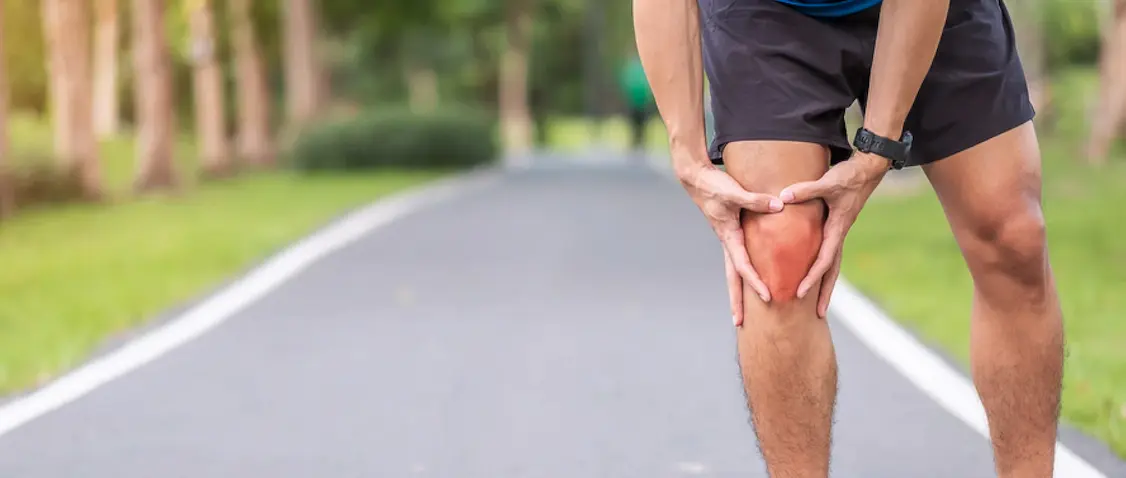
The knee joint is a complex structure designed to facilitate movement while minimizing friction. It comprises bones covered with a thin layer of smooth cartilage that reduces friction during motion. Additionally, the knee contains the meniscus, a wedge-shaped cartilage that acts as a cushion and stabilizer for the joint. Four major ligaments support the knee, while synovial fluid, a natural lubricant, further decreases friction within the joint.
Knee Osteoarthritis
Osteoarthritis (OA) of the knee involves progressive degeneration of joint cartilage and underlying bone. This condition is often exacerbated by previous injuries to the knee ligaments or meniscus. Modifiable risk factors such as obesity and smoking can accelerate the progression of OA. The disease is characterized by the breakdown of cartilage, leading to bone-on-bone contact, increased inflammation, and abnormal bone changes beneath the cartilage (McAlindon et al., 2017).
Medication and Supplements
Current management of knee OA includes various treatment options, though their effectiveness and safety vary:
- Paracetamol : Recent evidence indicates that paracetamol is generally ineffective for managing knee OA pain (McAlindon et al., 2017).
- NSAIDs (Non-Steroidal Anti-Inflammatory Drugs): These can be moderately effective in alleviating pain but come with significant risks, including gastrointestinal issues and cardiovascular events (Bally et al., 2017).
- Opioids: The use of opioids for knee OA is controversial due to the risk of dependency and escalating dose requirements.
- Nutritional Supplements: Supplements such as fish oil (omega-3 fatty acids) and curcumin have shown promise in reducing symptoms of OA. Fish oil may reduce joint inflammation, while curcumin has anti-inflammatory properties that can benefit joint health (Daily et al., 2016).
Exercise and Weight Loss
Physical therapy and exercise play a crucial role in managing knee OA. Exercise helps maintain muscle strength around the knee, which can alleviate pain and improve function. Water-based exercises or cycling are often recommended to minimize joint strain. Additionally, weight loss can be beneficial not only through reduced mechanical stress on the knee but also by lowering systemic inflammation (Messier et al., 2018).
Synthetic Injections
Hyaluronic acid injections, such as Synvisc and Durolane, have been used to reduce pain in mild to moderate knee OA. These injections can provide relief for up to 4-6 months in about 50% of patients, although they may be ineffective for others (Colen et al., 2020).
Steroid (Cortisone) Injections
Cortisone injections offer short-term relief by reducing inflammation in the knee. They typically provide benefit for 3-4 weeks but do not alter long-term disease progression. Repeated use of cortisone injections is associated with concerns about accelerating cartilage loss (McAlindon et al., 2017). Recent studies also suggest that cortisone injections may increase the risk of post-operative infection if administered close to knee replacement surgery (Siemieniuk et al., 2017).
Regenerative Injection Therapies
Regenerative therapies such as Platelet Rich Plasma (PRP) and Glucose Prolotherapy aim to stimulate healing in the knee joint. PRP injections, which involve using components from the patient’s own blood, have been shown to improve pain and function significantly. Similarly, Glucose Prolotherapy has demonstrated superior pain relief compared to exercise or saline injections (Topol et al., 2016; Rabago et al., 2013). PRP is often preferred due to its potentially greater efficacy and fewer required treatments compared to Prolotherapy.
Arthroscopy
Arthroscopic surgery for knee OA has been extensively studied. Recent research shows that arthroscopy generally does not offer significant long-term benefits for patients with degenerative knee conditions, though it may be helpful for mechanical symptoms such as locking (Thorlund et al., 2015; Khan et al., 2014). Current guidelines recommend against routine arthroscopy for knee pain in patients over 35 years old (Siemieniuk et al., 2017).
Joint Replacement Surgery
Total knee replacement (TKR) can be a transformative intervention for severe knee OA, providing substantial improvement in quality of life. However, it is considered a last-resort option and requires a significant commitment to post-operative rehabilitation. Timing of the surgery is crucial, as early intervention may not yield significant benefits for patients with less severe symptoms (Dakin et al., 2015).
References
- Bally, M., Dendukuri, N., Rich, B., Nadeau, L., Helin-Salmivaara, A., Garbe, E., ... & Brophy, J. M. (2017). Risk of acute myocardial infarction with NSAIDs in real-world use: Bayesian meta-analysis of individual patient data. BMJ, 357, j1909. PubMed
- Belk, J. W., Kraeutler, M. J., Houck, D. A., & McCarty, E. C. (2021). Platelet-rich plasma versus hyaluronic acid for knee osteoarthritis: A systematic review and meta-analysis of randomized controlled trials. American Journal of Sports Medicine, 49(1), 249-260. PubMed
- Colen, S., Geerts, J., Van Den Bekerom, M. P., & Mulier, M. (2020). Hyaluronic acid in the treatment of knee osteoarthritis: A systematic review and meta-analysis with emphasis on the efficacy of different products. BioDrugs, 34(3), 257-268. PubMed
- Daily, J. W., Yang, M., & Park, S. (2016). Efficacy of turmeric extracts and curcumin for alleviating the symptoms of joint arthritis: A systematic review and meta-analysis of randomized clinical trials. Journal of Medicinal Food, 19(8), 717-729. PubMed
- Dakin, H., Gray, A., Fitzpatrick, R., MacLennan, G., Murray, D., & KAT Trial Group. (2015). Rationing of total knee replacement: A cost-effectiveness analysis on a large trial data set. BMJ Open, 2(1), e000332. PubMed
- McAlindon, T. E., LaValley, M. P., Harvey, W. F., Price, L. L., Driban, J. B., Zhang, M., ... & Losina, E. (2017). Effect of intra-articular triamcinolone vs saline on knee cartilage volume and pain in patients with knee osteoarthritis: A randomized clinical trial. JAMA, 317(19), 1967-1975. PubMed
- Messier, S. P., Resnik, A. E., Beavers, D. P., Mihalko, S. L., Miller, G. D., Nicklas, B. J., ... & Loeser, R. F. (2018). Intentional weight loss in overweight and obese patients with knee osteoarthritis: Is more better? Arthritis Care & Research, 70(11), 1567-1574. PubMed
- Rabago, D., Patterson, J. J., Mundt, M., & Zgierska, A. (2013). Dextrose prolotherapy for knee osteoarthritis: A randomized controlled trial. Annals of Family Medicine, 11(3), 229-237. PubMed
- Topol, G., Podesta, L., & Irani, M. (2016). The chondrogenic effect of intra-articular hypertonic-dextrose (prolotherapy) in severe knee osteoarthritis. PM&R, 8(6), 549-557. PubMed
- Siemieniuk, R. A., Harris, I. A., Agoritsas, T., Poolman, R. W., Brignardello-Petersen, R., Van de Velde, S., ... & Buchbinder, R. (2017). Arthroscopic surgery for degenerative knee arthritis and meniscal tears: A clinical practice guideline. BMJ, 357, j1982. PubMed
Related Articles
Tired of temporary fixes with no lasting relief?
Want lasting relief from pain? Take action today.
We can help you achieve lasting pain relief through a tailored plan that fits your individual needs.
Book Appointment now